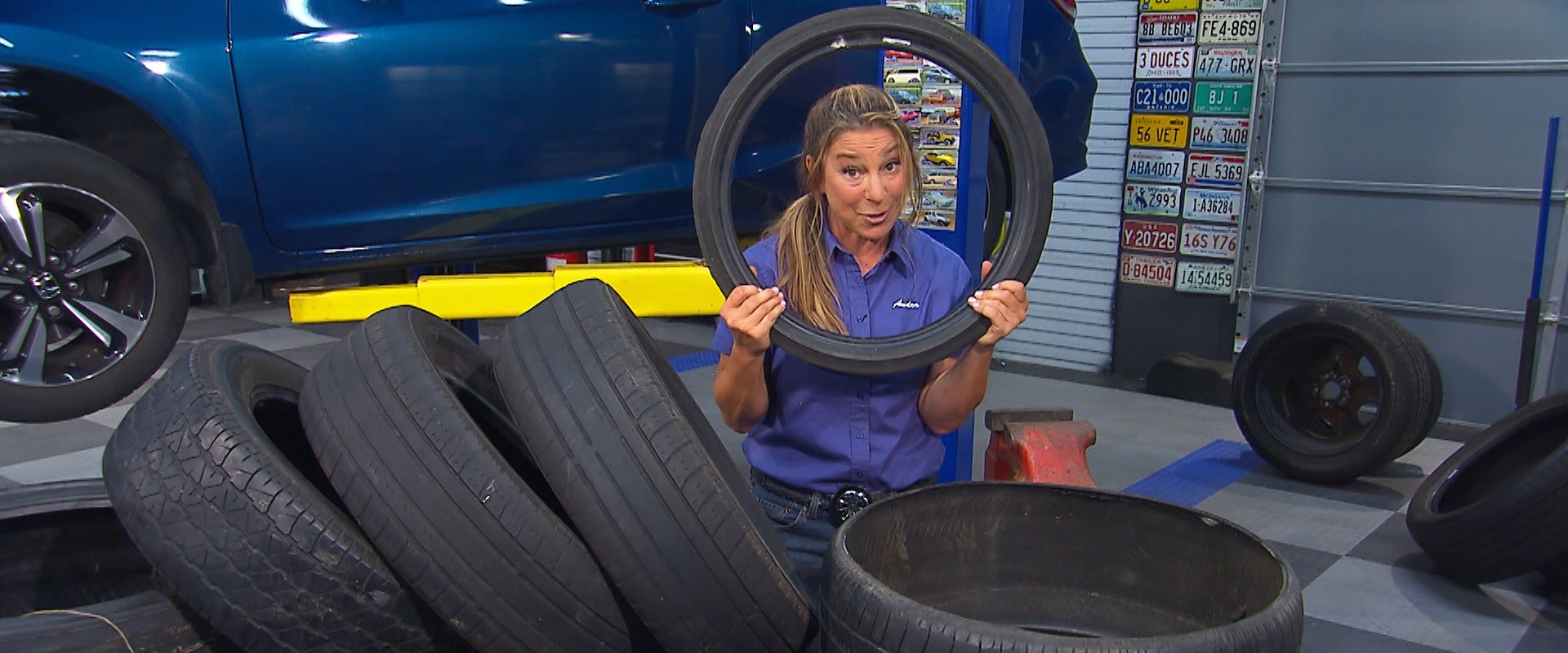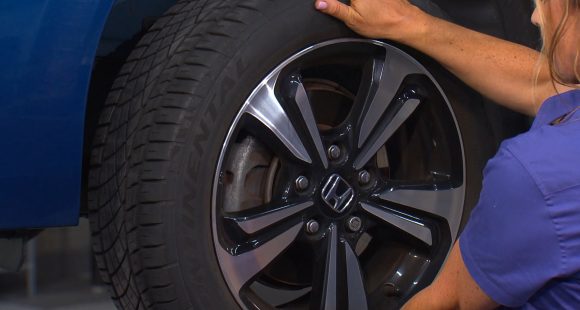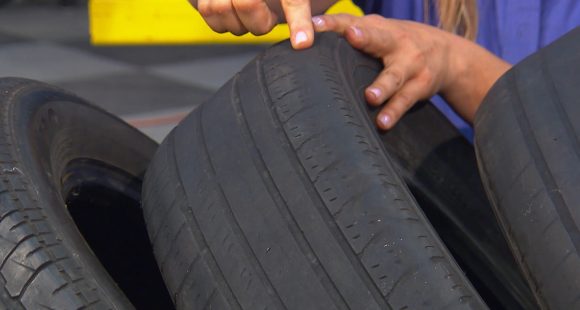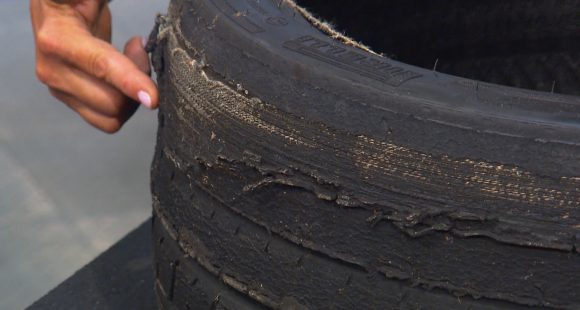Tire Wear
We talk so much about your vehicle’s tires because they are just so important. They are, after all, what connects you to the road. So, Audra Fordin is here to show us how to tread safely in this week’s “Your Drive.”
AUDRA FORDIN: Tires are so important because they are your car’s first line of defense to the road. You don’t have to be a mechanic, you only have to be observant and take a look at the tread wear patterns to see what’s going on with your front end, your steering, and your suspension.
If you have any kinds of shake in the wheel, or when you pick the car up and you can move it from side to side or top to bottom, this is an indication that you have a problem with your tie rod ends. Or, if you’re having any kind of play going from top to bottom, that would be a ball joint or control arm bushings, and you can see all of that wear right here in the tread wear.
You have your shocks and your struts, and they’re designed to absorb the impact of the road. If they’re not doing their job, well then you can clearly see it as day, on the tread. So, let’s take a look here. This tire has what looks like waves running through it– we call it cupping– and it happens when the tire is bouncing all around, well then you can see it in the pattern on the tread.
Right here next to it, take a look at this one. If you see tires that look all chopped up and burnt out, talk to your teenager!
And right now, we’re going to look over to this wear pattern in the center. This would happen if your tire pressure is overinflated, like a balloon. It’s going to wear out in the center of the tire, which is why it’s so important to have the correct tire pressure in your tires. Next to it, you can see here, on the outside there’s wear on the shoulder, and that happens from an underinflated tire. Again, checking your tire pressure can make sure that the tire is inflated correctly.
Or, the worst: If there’s any nicks, damages, or if you’re driving on an underinflated tire and wear out the sidewall—well, that’s potential blowout material. In that case, it’s very dangerous. Make sure to check the tire pressure, and reach out to us if you have any questions or comments, right here at MotorWeek.












